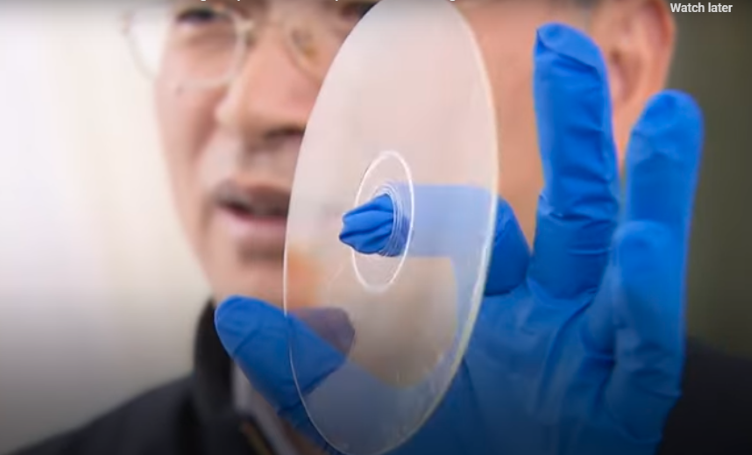In a shocking twist of fate, the CD, once deemed a relic of the past, has staged a remarkable comeback, leaving many wonderings.
The CD’s remarkable resurgence is more than just a comeback story – it’s a testament to the enduring power of physical media in a digital age.
In the past, CDs had a very small capacity, and people would only store one movie on them. However, as time went on and SD cards, USB, and other devices became available, the idea of CDs was completely abandoned. However, this idea has since returned, and you can now store thousands of movies, photos, and videos on a newly developed CD.
Let’s investigate this recently developed CD, but first we should take a brief glance at the history of CD to understand how it got started.
A brief flashback to CD
In an effort to completely transform music storage and playing, Philips and Sony collaborated to create the Compact Disc (CD) in the late 1970s. The commercial release of the first CDs in Japan in 1982 was a turning point in the history of digital technology. Because CDs use digital encoding and laser-based playing, they provide better audio fidelity and longevity than analog media like vinyl records and cassette cassettes. This new format was widely adopted for the purpose of storing software, games, and multimedia content because to its rapid rise in popularity. CDs went beyond just music during the 1980s and 1990s to become a common way to distribute data. The utility of CDs was further expanded with the development of writable and rewritable formats.
In the era of digitalization, CDs continue to serve niche markets and audio lovers and have archive value despite their diminishing sales. This solidifies their status as a revolutionary breakthrough in digital storage and delivery.
The decline of CD
The music industry has changed over the past 20 years due to a number of interrelated reasons, which have contributed to the downfall of the Compact Disc (CD) as the dominant music format. When CDs were first introduced in the early 1980s, they completely changed accessibility and audio quality by providing instant track skipping and higher fidelity. They swiftly replaced cassette tapes and vinyl albums as the go-to format for distributing and enjoying music.
But the emergence of digital technology, especially with the release of MP3 files and subsequently streaming services, drastically changed the tastes and behaviors of consumers. Unlike physical CDs, digital downloads offered listeners the unmatched convenience and mobility of purchasing and storing music files on their computers and portable devices.
The increasing usage of smartphones, which allowed consumers to access enormous music archives through streaming services like Spotify, Apple Music, and others, hastened this transition even more.
In conclusion, the fast advancement of digital technology, alterations in consumer behavior, and a shift in cultural tastes toward the consumption of digital media can all be credited with the CD’s demise as a popular format.
Improbable comeback of CD
Scientists from Shanghai University of Science and Technology have created a 3D optical disk with an incredible capacity. With their findings published in Nature, it makes sense that it would generate some buzz—it has 1.6 petabytes of storage capacity. What is 1.6 petabytes, then? Although the quantity of data on a single optical disk is astounding, let’s break it down:
Let’s contrast it with the storage champion of today. With a whopping 100 TB of storage capacity, the Exa drive EDDCT100 is currently the largest solid state drive on the market, but it costs an astounding $40,000, or $400 per TB.
Twenty million songs, twenty thousand HD movies, and two regular iPhones’ worth of data can all fit on a 100 TB drive.
Much while new this disc can store much more data—1.6 petabytes, or 1600 terabytes or 200,000 gigabytes—the most astounding thing is that it is roughly the same size as a standard DVD and can store 4,000 times as much data as a blue-ray.
How Did The Researcher Do It?
This is a condensed and concise description of it.
Layers hold the key to this enormous storage capacity. The data on conventional optical discs, such as CDs or DVDs, is usually stored in one or two layers, with the possibility of up to four layers. However, this new have 100 floors, with each layer containing valuable information. By stacking these layers, researchers have packed more data onto the disc than ever before.
They employed cutting-edge material that minimizes light dispersion to accomplish this accomplishment, together with ultra clear and nano scale spots. Imagine minuscule dots on every layer; these are the locations where the magic happens. Scientists developed a novel substance known as aggregation Induced Emission Dye-Dopped photoresist, or AIEDDPR for short. consider these spots to be data pixels. What’s intriguing about them is that their wavelength is less than that of visible light.
This was a drawback of conventional optical storage, but with the help of this technique, data may now be encoded on those 100 layers and recorded in portions as small as 1/10 of a visible light wavelength.
Anyway, how would one write data on this disc? It’s like arranging a laser ballet: a red laser cuts the writing process by regulating the timing so that the spot is smaller than the light waves themselves. It’s similar to precisely manipulating light at the nano-scale. A green laser creates the spot formation. It’s like a conductor raising the battery. They used a second laser to read the data; a blue beam causes the spots to glow, and an orange light eliminates the glow, revealing the data.
The researchers claim that their disc can read and write data extremely accurately because it has 100 layers that are only a few micrometers apart.
Use cases and applications
With the help of these new, ultra-high capacity discs, data centers may be able to store exabytes of data in a lot less physical space than they already do. Instead of a stadium, this is equivalent to a million gigabytes of storage in a room. Moreover, optical discs are resistant against electromagnetic interference, lightweight, and long-lasting, which makes them perfect for long-term archival storage. This makes them appropriate for protecting important data.
In Conclusion
The CD has made a remarkable comeback, evolved into a powerful storage solution capable of holding up to 1.6 petabytes of data. This revolutionary technology is poised to gain widespread acclaim, as no other device has come close to matching its vast storage capacity. Although challenges persist, including reading and writing speed, data integrity, durability, and compatibility issues, the AIE-DDPR optical discs offer a promising solution for efficient, compact, and environmentally friendly data storage. Despite the hurdles, this technology is expected to transform the data storage landscape, making it an exciting development to watch in the future.

















